<< Previous | Displaying results 4751-4800 of 6769 for "" | Next >>
Offices of the International Criminal Tribunal for Rwanda (ICTR) in Arusha, Tanzania.
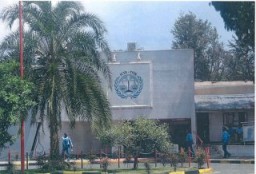
Wanted poster, published by the Rewards for Justice program, seeking key perpetrators who have been indicted by the International Criminal Tribunal for Rwanda (ICTR).
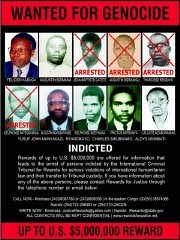
Singer Simon Bikindi sits at the International Criminal Tribunal for Rwanda during his trial for incitement to genocide. Arusha, Tanzania, April 4, 2002.
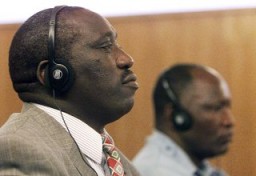
A class of boys from the school in Oradour. All of the people pictured here were killed by the SS during the June 10, 1944, massacre. Oradour-sur-Glane, France, photograph taken between 1940 and June 1944.
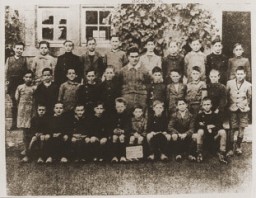
A school class of girls in Oradour. All of the children pictured were killed by the SS during the June 10, 1944, massacre. Oradour-sur-Glane, France, photograph taken 1942–43.
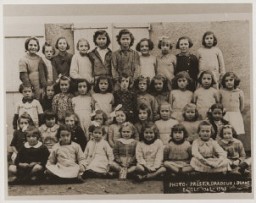
The Machefer family in Oradour. All of the people pictured here, except for the father, were killed by the SS during the June 10, 1944, massacre. Oradour-sur-Glane, France, October 1943.
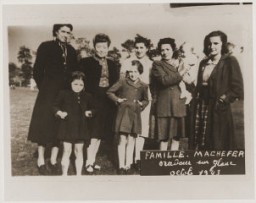
The ruins of Oradour-sur-Glane, destroyed by the SS on June 10, 1944. Oradour-sur-Glane, France, photograph taken in September 1944.

Ruins in Oradour-sur-Glane, France. The town was destroyed by the SS on June 10, 1944. Photograph taken in September 1944.

A prisoner in a compression chamber loses consciousness before dying during a medical experiment simulating high altitudes. Dachau Concentration Camp, Germany, 1942.
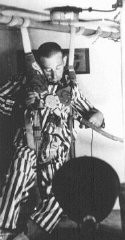
Four days after the outbreak of World War II, Secretary of State Cordell Hull signs the Neutrality Proclamation (first signed by President Franklin D. Roosevelt) at the State Department. Washington, DC, United States, September 5, 1939.
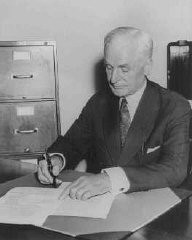
The Secrets of the Wise Men of Zion is the first documented version of the Protocols of the Elders of Zion published outside of Russia. Published in Charlottenburg, Germany, 1920.
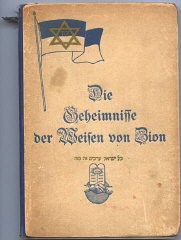
Like many editions of the Protocols of the Elders of Zion published in the 1920s, this French-language version charges that Jews are a foreign and dangerous influence. Published in Paris, 1920.
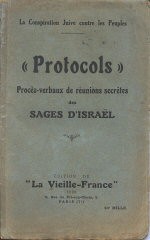
Cover of The Jewish Peril: The Protocols of the Learned Elders of Zion, published in London, 1920. The Protocols of the Elders of Zion is the most notorious and widely distributed antisemitic publication of modern times. Its lies about Jews, which have been repeatedly discredited, continue to circulate today, especially on the Internet.
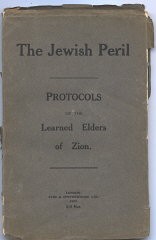
The International Jew, based largely on the Protocols of the Elders of Zion, sold more than 500,000 copies and was translated into at least 16 languages. Published in Dearborn, Michigan, United States, 1920.
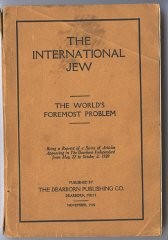
By 1922, The International Jew was already in its 21st printing in Germany. The edition shown here was published in Leipzig in 1922.
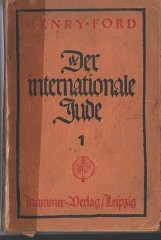
New York Herald reporter Herman Bernstein declared the Protocols “a cruel and terrible lie invented for the purpose of defaming the entire Jewish people.” Published in New York, 1921, reprinted 1928.
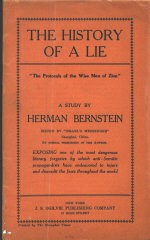
Alfred Rosenberg's 1923 commentary on the Protocols reinforced Nazi anti-Jewish ideology. This is the fourth edition. Published in Munich, 1933.
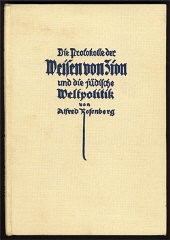
King Faisal of Saudi Arabia regularly presented copies of this edition of the Protocols to state visitors during the early 1970s. Published in Karachi, Pakistan, 1969. Courtesy of Hassan Mneimneh.
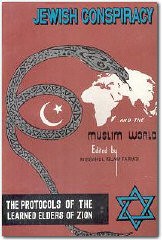
This Arabic translation of the Protocols by Ajaj Nuwayid also has appeared on a website sponsored by the Palestinian State Information Service. Published in Beirut, Lebanon, 1996.
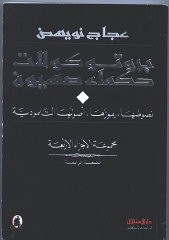
This 2005 Syrian edition of the Protocols of the Elders of Zion claims that the terrorist attacks of September 11, 2001, were orchestrated by a Zionist conspiracy. The final chapter predicts the eventual destruction of the State of Israel. Published in Damascus, Syria, 2005. Gift of the Embassy of Israel.
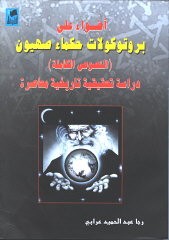
An exhibition at the United States Holocaust Memorial Museum demonstrated how the Nazis used the Protocols of the Elders of Zion to spread hatred of Jews. Washington, D.C., 2006-2018.
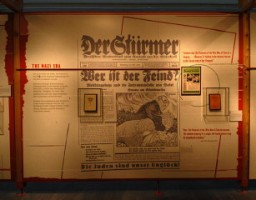
Exterior view of the ORT (Organization for Rehabilitation through Training) supply and transport building in the Foehrenwald displaced persons camp. Foehrenwald, Germany, 1953. This slide was taken by David Rosenstein during his inspection tour of the camp. After his return from the inspection tour in 1953, he briefed Congress on the plight of the remaining Jewish displaced persons in Europe and their inability to find permanent homes, nine years after the end of the war.
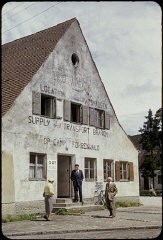
Former quarters of the German army converted into displaced persons housing. Bergen-Belsen, Germany, May 1945.

The exterior of a building in the Bergen-Belsen displaced persons camp in Germany. Photograph taken in 1945.
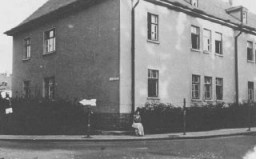
The International Military Tribunal was a court convened jointly by the victorious Allied governments. Here the Soviet, British, American, and French flags hang behind the judges' bench.
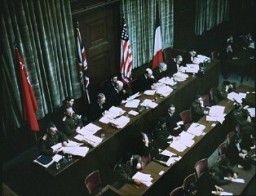
The remodeled courtroom at Nuremberg, site of the International Military Tribunal. Germany, November 15-20, 1945.
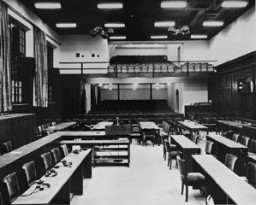
The Palace of Justice in Nuremberg, Germany, where the International Military Tribunal trial of war criminals was held. The flags of the four prosecuting countries (French, American, British, and Soviet) hang above the entrance.

US Chief Prosecutor Robert H. Jackson delivers the opening speech of the American prosecution at the International Military Tribunal. Nuremberg, Germany. November 21, 1945.
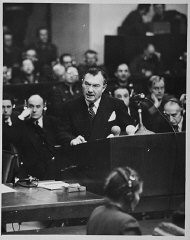
US Major Frank B. Wallis (standing center), a member of the trial legal staff, presents the prosecution's case to the International Military Tribunal at Nuremberg. A chart (top left) shows where the defendants (bottom left) fit into the organizational scheme of the Nazi Party. At right are lawyers for the four prosecuting countries. Nuremberg, Germany, November 22, 1945. The trials of leading German officials before the International Military Tribunal are the best known of the postwar war crimes trials.…
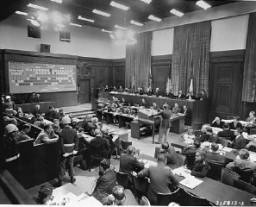
View of the defendants in the dock at the International Military Tribunal trial of war criminals at Nuremberg. November 1945.
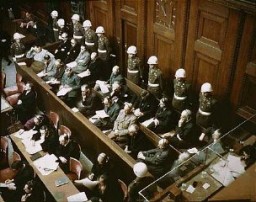
Photographs, artifacts, and a map presented as evidence at the International Military Tribunal. Nuremberg, Germany, between November 20, 1945, and October 1, 1946.
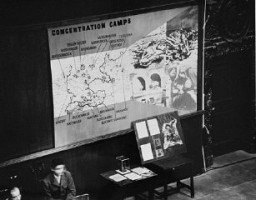
Birds-eye view of the fenced-in cell block where defendants in the International Military Tribunal war crimes trial were imprisoned. Nuremberg, Germany, between November 20, 1945, and October 1, 1946.
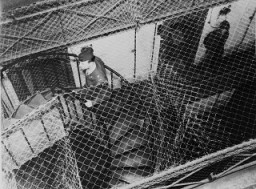
A tank guards the entrance to the Palace of Justice in Nuremberg, Germany, site of the International Military Tribunal. The trial formally opened in on November 20, 1945, just six and a half months after Germany surrendered.
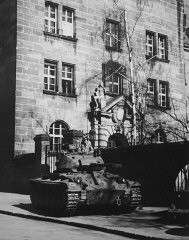
The defendants listen as the prosecution begins introducing documents at the International Military Tribunal trial of war criminals at Nuremberg. November 22, 1945.
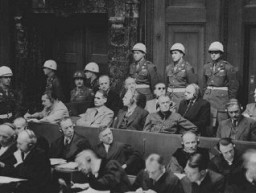
View of a criminal wing in the prison at Nuremberg, housing war crimes trials defendants. Baltic guards under the supervision of American authorities patrol the wing and keep constant watch over the prisoners. The upper floors are screened off with heavy chicken wire to discourage suicide attempts. Nuremberg, Germany, between November 20, 1945, and October 1, 1946.
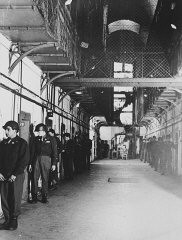
The defendants' box at the Nuremberg trial. Hermann Göring is seated at the far left of the first row. Nuremberg, Germany, 1945-1946.
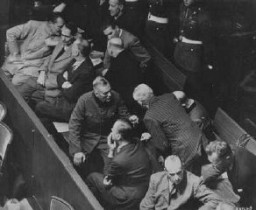
An American correspondent reads a special edition of the Nürnberger newspaper reporting the sentences handed down by the International Military Tribunal. Nuremberg, Germany, October 1, 1946.
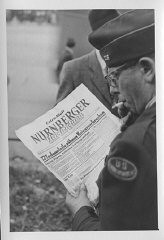
An armored car parked outside the gate of the Palace of Justice in Nuremberg on the day the judgment of the International Military Tribunal was handed down. Nuremberg, Germany, October 1, 1946.
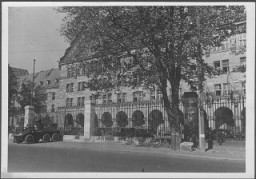
Otto Ohlendorf, commander of Einsatzgruppe D (mobile killing unit D), during Trial 9 of the Subsequent Nuremberg Proceedings. This photograph shows Ohlendorf pleading "not guilty" during his arraignment at the Einsatzgruppen Trial. Nuremberg, Germany, September 15, 1947.
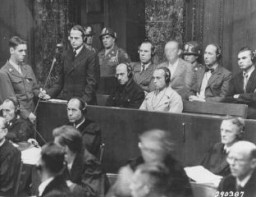
Walter Gumpert testifies for the prosecution during the Krupp Trial. Gumpert worked as a machinist at a Krupp factory. December 16, 1947.
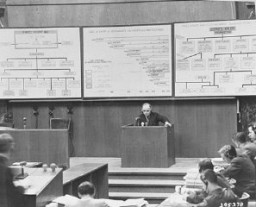
A Polish former inmate of Auschwitz identifies Oswald Pohl while on the stand for the prosecution during the Pohl/WVHA trial. This trial, case #4 of the Subsequent Nuremberg Proceedings, took place in a room in the Palace of Justice which was not the main courtroom. Nuremberg, Germany, April 18, 1947.
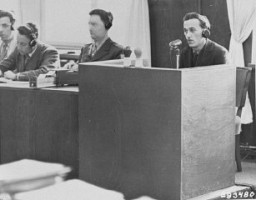
View of the courtroom as seen from the interpreters' section during the IG Farben Trial. The defense lawyers are in the foreground, the defendants are in the dock to the right, and the spectators' gallery is on the far side of the courtroom.
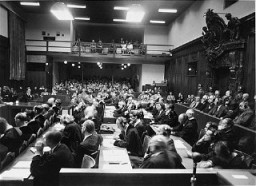
US Chief of Counsel Brigadier General Telford Taylor (standing at center podium) opens the prosecution's case at the IG Farben Trial. Note the camera in the corner of the room. August 27, 1947.

The IG Farben defendants hear the indictments against them before the start of the trial, case #6 of the Subsequent Nuremberg Proceedings. May 5, 1947.
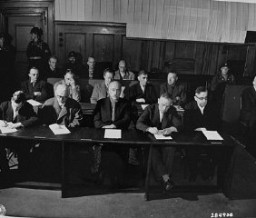
The defendants in the dock (at rear, with headphones) and their lawyers (front) follow the proceedings of the Hostage Case, case #7 of the Subsequent Nuremberg Proceedings. Nuremberg, Germany, 1947-48.

US Brigadier General Telford Taylor (front right), chief of counsel, sits at the prosecution table with his staff during the reading of charges against the defendants in the RuSHA Trial. October 10, 1947.
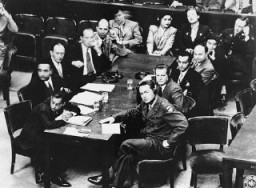
Defendant Inge Viermetz pleads not guilty at her arraignment during the RuSHA Trial, case #8 of the Subsequent Nuremberg Proceedings. October 10, 1947.
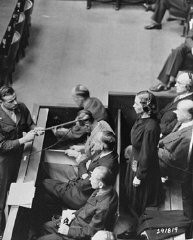
The courtroom during the Einsatzgruppen Trial of the Subsequent Nuremberg Proceedings. Chief Prosecutor Benjamin Ferencz stands in the center of the room. He is presenting evidence. Nuremberg, Germany, between September 29, 1947, and April 10, 1948.
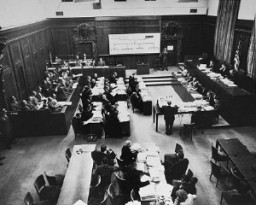
Chief Prosecutor Benjamin Ferencz presents evidence during the Einsatzgruppen Trial, Case #9 of the Subsequent Nuremberg Proceedings. Ferencz is flanked by German defense lawyers Dr. Friedrich Bergold (right, counsel for Ernst Biberstein) and Dr. Rudolf Aschenauer (left, counsel for Otto Ohlendorf), who are protesting the introduction of certain documents as evidence.
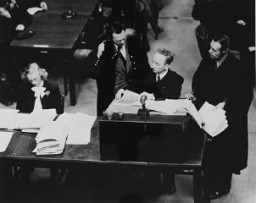
US prosecutor Robert Kempner during the Ministries Trial, case #11 of the Subsequent Nuremberg Proceedings.

We would like to thank Crown Family Philanthropies, Abe and Ida Cooper Foundation, the Claims Conference, EVZ, and BMF for supporting the ongoing work to create content and resources for the Holocaust Encyclopedia. View the list of donor acknowledgement.